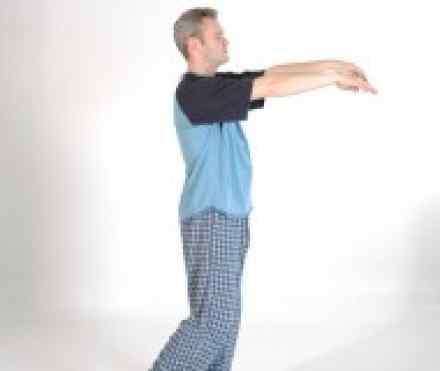
What is it?
Sleepwalking — also known as somnambulism — usually involves getting up and walking around while asleep. Most common in children between the ages of 8 and 12, sleepwalking often is a random event that doesn't signal any serious problems or require treatment.
However, sleepwalking can occur at any age and may involve unusual, even dangerous behaviors, such as climbing out a window or urinating in closets or trash cans.
If anyone in your household sleepwalks, it's important to protect him or her from sleepwalking injuries.
Symptoms
Sleepwalking is classified as a parasomnia — an undesirable behavior or experience during sleep. Someone who is sleepwalking may:
- Sit up in bed and open his or her eyes
- Have a glazed, glassy-eyed expression
- Roam around the house, perhaps opening and closing doors or turning lights on and off
- Do routine activities, such as getting dressed or making a snack — even driving a car
- Speak or move in a clumsy manner
- Scream, especially if also experiencing night terrors
- Be difficult to arouse during an episode
Sleepwalking usually occurs during deep sleep, early in the night — often one to two hours after falling asleep. Sleepwalking is unlikely to occur during naps. The sleepwalker won't remember the episode in the morning.
Sleepwalking episodes can occur rarely or often, including multiple times a night for a few consecutive nights.
Sleepwalking is common in children, who typically outgrow the behavior by their teens, as the amount of deep sleep they get decreases.
Causes
Many factors can contribute to sleepwalking, including:
- Sleep deprivation
- Fatigue
- Stress
- Anxiety
- Fever
- Sleeping in unfamiliar surroundings
- Some medications, such as zolpidem
Sleepwalking is sometimes associated with underlying conditions that affect sleep, such as:
- Seizure disorders
- Sleep-disordered breathing — a group of disorders characterized by abnormal breathing patterns during sleep, the most common of which is obstructive sleep apnea
- Restless leg syndrome (RLS)
- Migraine headaches
- Stroke
- Head injuries or brain swelling
- Premenstrual period
In other cases, use of alcohol, illicit drugs or certain medications — including some antibiotics, antihistamines, sedatives and sleeping pills — can trigger sleepwalking episodes.
Risk factors
Sleepwalking appears to run in families. It's more common if you have one parent who has a history of sleepwalking, and much more common if both parents have a history of the disorder.
Complications
Sleepwalking itself isn't necessarily a concern, but sleepwalkers can easily hurt themselves — especially if they wander outdoors or drive a car during a sleepwalking episode. Prolonged sleep disruption can lead to excessive daytime sleepiness and possible school or behavior issues. Also, sleepwalkers usually disturb others' sleep.
Diagnosis
Unless you live alone and are completely unaware of your nocturnal wanderings, chances are you'll make the diagnosis of sleepwalking for yourself. If your child sleepwalks, you'll know it.
Your doctor may do a physical or psychological exam to identify any conditions that may be contributing to the sleepwalking, such as an abnormal heart rhythm, a seizure disorder or panic attacks. In some cases, observation or tests in an overnight sleep lab may be recommended.
References
http://www.nhs.uk/conditions/sleepwalking/Pages/Introduction.aspx
http://www.mayoclinic.org/diseases-conditions/sleepwalking/basics/definition/con-20031795
http://my.clevelandclinic.org/services/neurological_institute/sleep-disorders-center/disorders-conditions/hic-sleepwalking
http://www.webmd.com/sleep-disorders/guide/sleepwalking-causes

